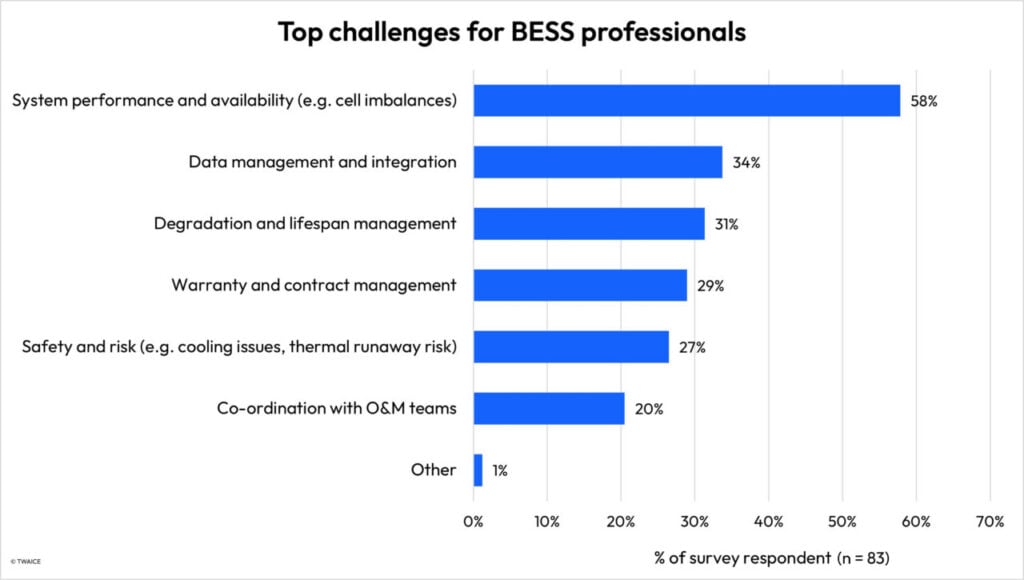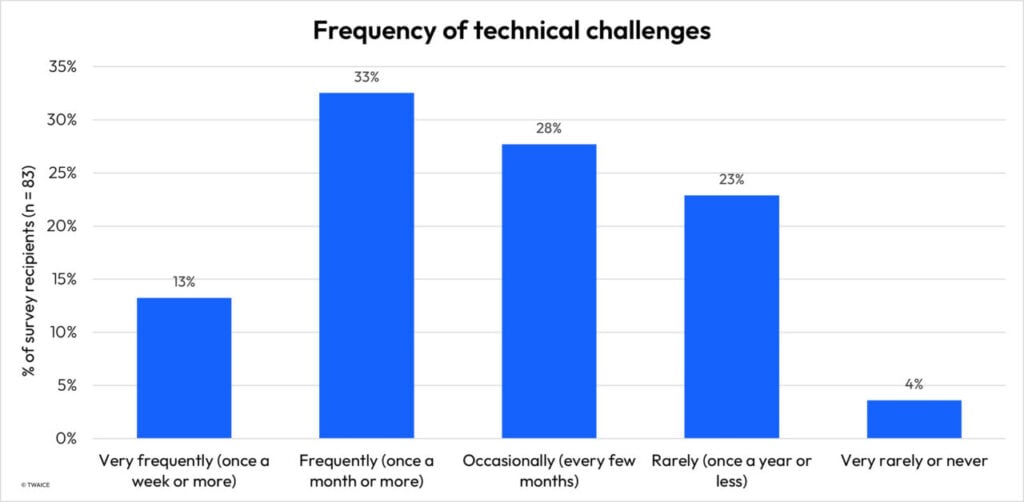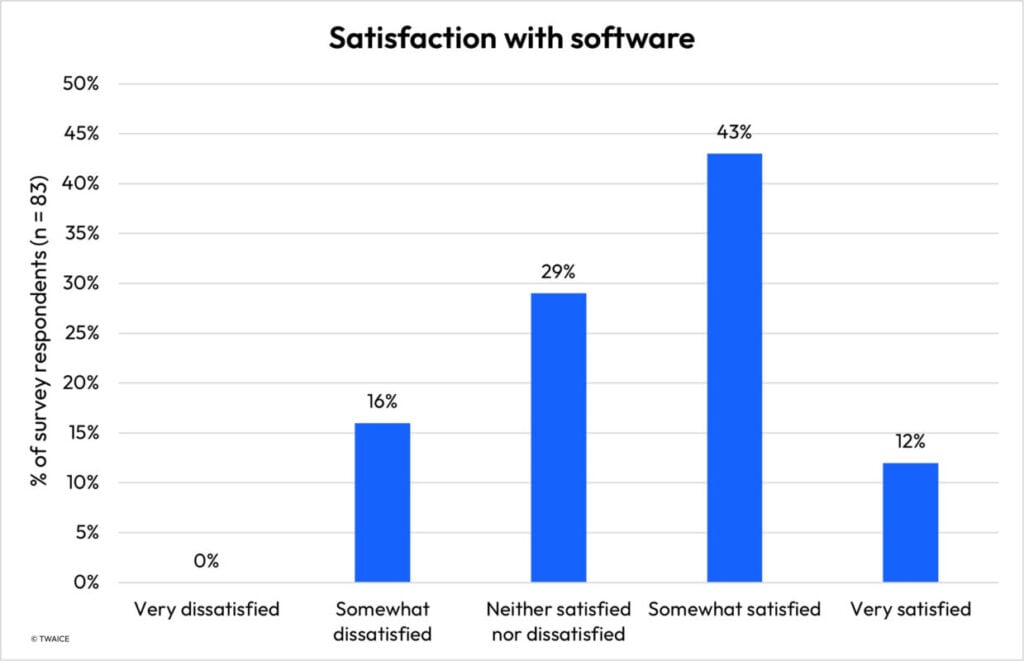
Ensuring high levels of system performance and availability are top priorities for battery storage professionals, and data plays a key role in achieving these goals.
That’s one of the main takeaways of a fascinating new battery energy storage system (BESS) survey of 83 industry respondents in the US and Europe conducted by AI-driven battery analytics software provider TWAICE.
Enjoy 12 months of exclusive analysis
- Regular insight and analysis of the industry’s biggest developments
- In-depth interviews with the industry’s leading figures
- Annual digital subscription to the PV Tech Power journal
- Discounts on Solar Media’s portfolio of events, in-person and virtual
TWAICE found that while safety remains a core priority, there’s a growing emphasis on making assets as efficient and attractive to investors as possible. Battery storage systems are a complex asset class participating in complex market opportunities.
Capturing their value means navigating market rules and figuring out the best times to charge and discharge, all while monitoring and managing key metrics like State of Health (SoH) and State of Charge (SoC).
In other words, profitability and performance matter more than ever in increasingly competitive markets, where smart decision-making based on actionable insights is necessary.
Participants were asked to highlight operational and technical challenges, how frequently their assets encounter technical issues, their approach to operations and maintenance (O&M) and their revenue generation strategies and expectations.
Those surveyed work at a variety of different companies, such as independent power producers (IPPs), engineering, procurement and construction (EPC) companies and battery storage system integrators, in various roles from asset management to O&M and pre-operations.
This gave the authors at TWAICE a good cross-section of stakeholders whose views they could aggregate for the report, which you can download for free.
While safety remains a core priority, nearly two-thirds (58%) named system performance and availability as a top concern. At the same time, integrating and managing data came second in the hierarchy of challenges, cited by over one-third (34%) of those surveyed.

Degradation and lifespan management, along with warranty and contract management were also popularly cited challenges.
These findings reflect the sector’s evolving concerns. Despite safety still being a core requirement—with 27% citing it as a top challenge—as the industry matures, the list of priorities has lengthened, with professionals now equally interested in maximising ROI, improving overall BESS performance, and increasing profits.
It’s important to note that the above challenges are all closely connected. They are also all areas in which gathering and acting on data can make a tremendous impact.
One asset owner commented that paying close attention to system degradation and performance is crucial towards ensuring financial targets are met. Another respondent highlighted the close relationship between “accurately predicting and optimising performance while balancing operational needs and long-term reliability” in managing and measuring battery lifespan versus degradation.
Performance issues are more common than you might think

As the graph above shows, almost half of all respondents (46%) said they experience frequent technical issues with BESS assets, including 13% who said they encounter issues once a week or more and 33% who encounter issues at least once a month.
In fact, all but 4% of respondents encounter technical issues with varying frequency throughout the year.
It was also notable that 40% of O&M professionals surveyed encounter issues at least once weekly, suggesting that due to different functional perspectives, other colleagues, such as asset managers, may not be aware of how frequent these technical challenges can be.
Furthermore, internal data silos and asymmetry of roles, for example between owner-operators versus integrators, can lead to communication issues and general operational friction.
BESS technical issues are often front-loaded into an asset’s lifetime, with 72% of failure incidents occurring during the first two years of operation, according to data from the US Electric Power Research Institute (EPRI).
Dissatisfaction with the software technology stack
The survey also revealed different views on the software tech stack respondents are using to manage their BESS projects or portfolios.
It was found that only about half (55%) of them were happy with the software tech stack they used. Just 12% reported being ‘very satisfied,’ less than the 16% which were ‘somewhat dissatisfied’.

In this young, vibrant and, above all, rapidly growing industry, the standard operating procedures are still being written. There is still a non-standardised approach to adopting software and how data can be integrated and shared across the different applications relevant to an asset’s business case.
TWAICE found that many survey respondents were aware of this imperfect situation. They recognised the great value of integrating and leveraging applications they used.
Data, if integrated and shared, can be used to model and predict future scenarios in addition to providing insights into the current status of assets. This would enable BESS professionals to be forward-looking in managing assets, reducing risk, optimising performance, and extending their batteries’ operating lifespan.
You can download TWAICE’s free report, ‘BESS Pros Survey: What matters most to BESS Professionals Today’ here.
About the Author
Olivia Willson is a Senior Product Marketing Manager at TWAICE, bringing over five years of experience in product marketing, sales enablement, and performance marketing. Based in Berlin, she previously held key marketing roles specialising in feature promotion, conversion rate optimisation, and digital marketing strategies.

